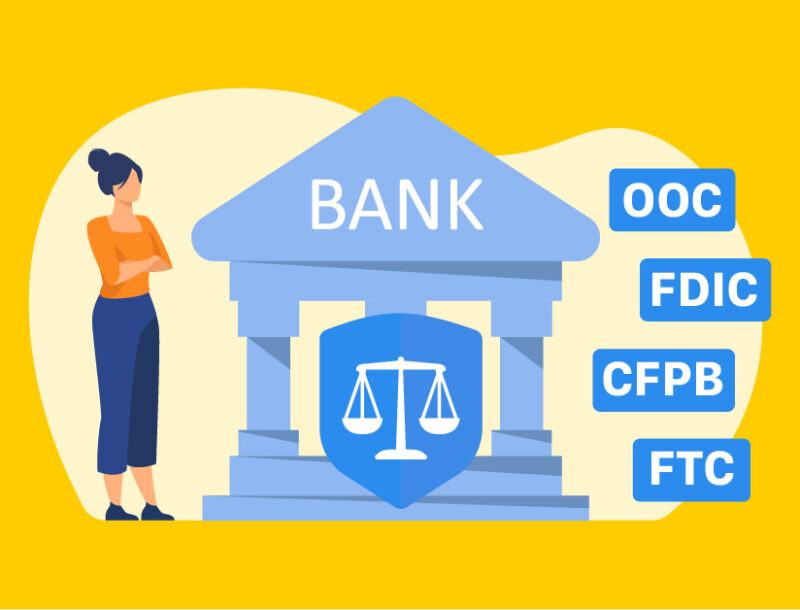Brand Monitoring & Compliance: Best Practices for Safeguarding Your Brand

What is Brand Monitoring?
Brand monitoring is a crucial component of marketing compliance, ensuring that a company’s brand is upheld accurately and consistently across channels.
In today’s environment, implementing brand compliance is vital in aiding an organization in identifying any issues or misuse of its brand by affiliates, partners, or other third parties. This proactive approach allows for prompt remediation to avoid any potential compliance hiccups or regulatory scrutiny that may arise.
Bear in mind that your company is responsible for all marketing materials that mention your brand, whether you’re aware of them or not. The mention of your brand is your responsibility to monitor. Increasing your attention on brand monitoring is needed as the use of digital marketing channels and third-party marketing continues to grow rapidly, increasing risk.
Here are the benefits of brand monitoring, common branding issues, and best practices to mitigate branding risk.
Benefits of Brand Monitoring and Compliance
Proven Company Due Diligence
Monitoring your brand ensures that you have accurate and consistent branding and shows that your company is performing its due diligence for brand compliance.
A strong commitment to compliance and brand integrity sends a clear message to regulatory bodies and consumers that they can trust your organization. This helps a company to mitigate risks associated with brand misrepresentation and upholds ethical standards, limiting regulatory actions against them. Ultimately, this positions your company as a reliable and responsible player in the industry.
Improvements to Brand Recognition and Brand Trust
It’s important to highlight the significant impact brand monitoring can have on brand recognition and trust. Monitoring makes it possible to have an effective brand that is recognizable and resonates with your target audience. The key is consistency. The more your consumers are exposed to consistent branding, the more trust they associate with your brand.
Customers are more likely to engage with and remain loyal to a brand they trust. They feel confident in the brand’s ability to consistently deliver on its promises, fostering customer retention and encouraging word-of-mouth referrals. In essence, brand monitoring not only bolsters brand recognition but also nurtures a deeper level of trust among consumers, contributing to long-term brand success and growth.
Identifying Issues and Improvements Proactively
Brand monitoring serves as a protective shield for your organization. By continuously monitoring your brand’s online presence, you can swiftly identify and address any issues or potential misunderstandings. This prevents the spread of misinformation about your products or services, safeguarding your brand’s reputation.
Furthermore, spotting issues before they escalate into significant problems enables you to avoid branding mistakes and mitigate damage to your brand’s image. It allows you to take prompt corrective actions, ensuring your brand remains aligned with your intended messaging and values. In this way, brand monitoring serves as a crucial tool in brand compliance, preserving the trust and confidence of your customers.
Reduces Costly Legal Risks
Effective brand compliance techniques and processes allow companies to lower the likelihood of non-compliance, which could result in hefty fines.
By rigorously adhering to brand compliance guidelines, organizations create a protective barrier against potential regulatory violations, thus minimizing the chances of costly consequences such as penalties, lawsuits, and damage to the company’s reputation.
In essence, the brand compliance framework acts as a proactive safeguard for the organization’s financial health and reputation.
Common Brand Compliance Issues
Reputation and Customer Perception Risk
In this new social media age, it’s important to recognize that mentions of your brand do not solely originate from your marketing team. Harmful or misinformed posts can form for several reasons, including dissatisfied customers, individuals who may not fully grasp your messaging, or fraudulent third parties who are trying to take advantage of vulnerable consumers.
These negative perceptions of your brand could hurt your organization, which is why staying proactive is essential. Monitoring your brand can help you effectively manage your reputation and address customer concerns before they get out of control.
Unknown Third-Party Advertising
Even if unknown third parties use your brand name in promotions, you’re still responsible for what they say on your behalf. Any mention of your brand is your responsibility, whether you know about them or not.
For example, PerformLine’s Top UDAAP Compliance Issues Report reveals that one of the most common compliance issues is third parties deceptively using a brand’s name to lure consumers into submitting their information by offering them fraudulent “payday” loans.
New Age of AI and Ads
AI-driven content creation has undoubtedly revolutionized the marketing and advertising landscape and brought forth a new set of challenges. One of the prominent concerns is the spread of misinformation and the use of clickbait tactics in digital advertising.
With AI’s ability to generate content quickly and efficiently, there’s an increased risk of misleading or inaccurate ads slipping through the cracks. These ads are often designed to grab attention at any cost and can lure unsuspecting consumers into clicking on deceptive links or engaging with content that doesn’t align with their financial goals or needs.
This erodes trust between consumers and brands, and poses ethical and reputational risks for businesses. As a result, advertisers should aim to balance leveraging AI for content and ad creation while preserving brand messaging and regulatory compliance.
The idea is to be efficient but not reliant on AI. Adding a layer of review and verification may be helpful in ensuring that digital advertising remains trustworthy and continues to produce valuable channels.
The Case for Brand Monitoring – A Real-World Example
Recently there was a case where a bill payment company used brand names and logos to falsely represent affiliations for the purpose of tricking consumers. This was accomplished through the use of:
- Deceptive search ads: The company purchased search engine ads designed to show when consumers searched for the companies they owed bills to. The ads contained language carefully written to mislead consumers into believing the company was affiliated with the billing organizations
- Misleading landing pages: Landing pages prominently featured billers’ names and logos despite formal relationships
This led to hundreds of thousands of consumers being deceived into using this third-party site or believing it was their biller’s chosen payment platform, even when no formal agreements were in place, resulting in consumer harm and confusion.
This type of incident can impact companies in many different ways, including reputational damage, potential legal liability and regulatory scrutiny, and increased customer complaints resulting in a possible loss of business.
Had proper brand monitoring been in place, the deceptive ads could have been identified, and the billing companies could have taken prompt corrective action.
📚
What you don’t know can hurt you—brand reputation is critical. Read the full Executive Summary here.
Branding Best Practices and Preventative Actions
Create Brand Guidelines and a Compliance Process
The first step to developing successful branding is to set guidelines and processes that define your intentions. These guidelines typically vary between brands but generally include:
- Brand messaging and tone of voice
- Primary logo and variations
- Colors and fronts
- Marketing assets and collateral
- Required disclosures, banned language, and other dos and don’ts for regulatory obligations
These guidelines will define the brand identity, allowing consistent branding. After these are defined, it’s time for you and your team to craft a brand strategy that effectively communicates and integrates the brand’s identity with your customers.
Moreover, your company should set brand compliance strategies to protect your organization from the above mentioned issues. The brand compliance strategy might include approval and review processes to review brand compliance in addition to monitoring branding.
Collaborate with Your Marketing Team
To effectively monitor and stay compliant, it’s essential for your company to create a culture of compliance. Collaborating and setting clear goals for staying compliant forms a shared importance of brand compliance across the company.
Provide training sessions and monthly meetings for branding and compliance topics. This gives the marketing team time to present brand guidelines and new marketing campaigns while the compliance team has the opportunity to share regulatory updates. This enables everyone to be on the same page and feel responsible for their share of staying compliant.
Learn more about how to effectively collaborate between marketing and compliance teams here.
Set Up a Secure Content Repository
Utilize platforms such as Dropbox, Google Drive, Microsoft Drive, or other trusted cloud services that allow you to create a centralized hub for your pre-approved content and guidelines. This not only simplifies the review and approval process but also ensures that only authorized team members can access the most up-to-date materials that have been cleared for use.
Furthermore, a content repository provides the ability to track the creation and access of digital assets. This feature enables you to maintain records of how content was developed and who had access to what resources. Transparency enhances accountability and empowers your team to make informed decisions regarding content.
Track Changes, Versions, and Approval Decisions
Tracking changes to content during the review process helps avoid branding mistakes before content is released to the public. Adding audit records provides you with a comprehensive record of your compliance efforts that protects your organization from regulatory actions but also assigns accountability within your team.
Enhancing your content management practices reduces the risk of branding mistakes, and your compliance efforts become more resilient and responsible for your brand presence.
While the task of tracking these changes can be time-consuming, there are effective tools like PerformLine’s Document Review that can help streamline these processes.
Automate Your Compliance & Brand Monitoring
One of the most efficient ways to enhance your compliance efforts is by automating the monitoring process with the aid of brand monitoring services and tools. These services and tools are vital in ensuring that your brand’s online presence remains aligned with regulatory requirements and industry standards.
Automated omni-channel monitoring enables real-time tracking of brand mentions and discussions across channels, allowing you to proactively manage your brand’s reputation and respond swiftly to emerging issues. These tools save valuable time and resources while maintaining accuracy.
PerformLine provides an omni-channel compliance monitoring solution to help companies scale and increase the efficiency of brand monitoring and compliance across multiple channels.
In an increasingly digital landscape where brand perception can change in an instant, leveraging brand monitoring services and tools is a strategic move toward ensuring long-term compliance and preserving the brand.
The All-in-One Brand Monitoring & Compliance Service Protector
PerformLine’s omni-channel compliance brand monitoring service offers a comprehensive solution to help your organization efficiently manage and protect your brand’s integrity across channels, including the web, calls, emails, messages, social media, and documents.
When it comes to dealing with non-compliant third-parties and expanding your partner programs, PerformLine equips compliance teams with the tools needed to swiftly identify non-compliant partners and request remediation. This ensures that your partners consistently align with your brand’s values, messaging, and quality standards through automated discovery and monitoring.
By leveraging PerformLine’s brand monitoring services, you can optimize your compliance marketing strategies and effectively mitigate risks, safeguarding your brand’s reputation and ensuring long-term success.
Speak with our team today to optimize your brand compliance strategies and mitigate branding risk.


